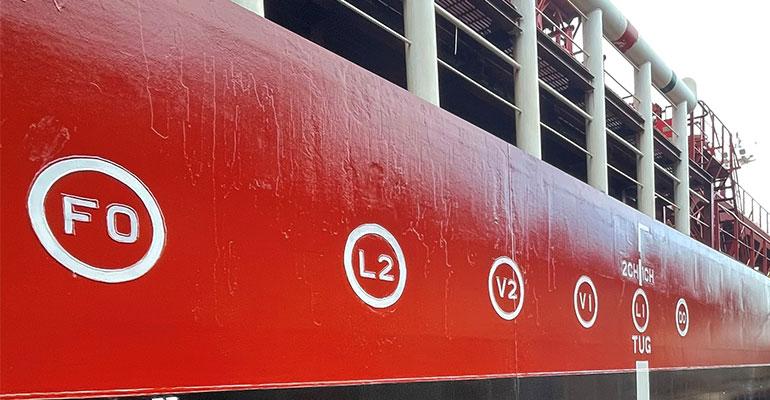In the summer, part of the underwater hull of the gas tanker "Rhogas" was protected with the Fouling Release System FRS from HATAG maritime and GTF Freese. An interim assessment was so positive that the shipping company now wants to continue the pilot test on a larger scale.
A pilot test with the FRS system on a Sloman Neptun gas tanker was successful, as SL Managing Director Guido Försterling and Vessel Performance Manager Jost Lüdke report in the magazine "Hansa". Now the trial is to be extended to other ships and to be able to assess the film over a whole year.
Some of the most important questions have already been answered during this pilot test.
Sloman Neptun Managing Director Guido Försterling, for example, said in the "Hansa" interview: "The film adheres - we can say that after half a year - unreservedly well." And Vessel Performance Manager Jost Lüdke added (in the same interview): "We have not even observed any mechanical damage so far." This refers to possible damage caused by the vessel lying on fenders or during locking.
Filming with the FRS system has also proven itself in "everyday ship life", they said in the interview.
Guido Försterling explained: "With this film, on the one hand you have to clean the ship less often under water and on the other hand damage can be repaired both above and under water with on-board means." This is of course an important point in view of the fact that it is not allowed to paint outboard with conventional paints. Regarding the costs, Försterling said, "We assume that the system is significantly cheaper than conservative antifouling products in the lifecycle consideration due to its durability and hydrodynamic properties." The properties mentioned also include the expected savings in fuel costs (by up to ten per cent) as well as the associated, correspondingly greatly reduced emissions.
The application of the system, consisting of an epoxy-based, solvent-free primer and the actual film, worked very well at the Bredo shipyard in Germany, the interview continued.
However, this cannot simply be transferred to "any shipyard" anywhere in the world. HATAG maritime has been working for some time to train a network of certified applicators who can then apply the film in the shipyards.
But what is Sloman Neptun's conclusion after this first test run?
Guido Försterling once again: "We would like to foil more ships next year, when we will have to do some docking. Also, as reported at the beginning, to test the FRS system under real conditions over all 12 months of a year and the corresponding climatic conditions.
Copyright © 2024. All rights reserved. Seatrade, a trading name of Informa Markets (UK) Limited.
Add Seatrade Maritime News to your Google News feed.  |

